SKOVENS ARENA
A team of British architect Zaha Hadid in close collaboration with architecture and engineering consultancy Sweco and Tredje Natur architects has won the competition of ...
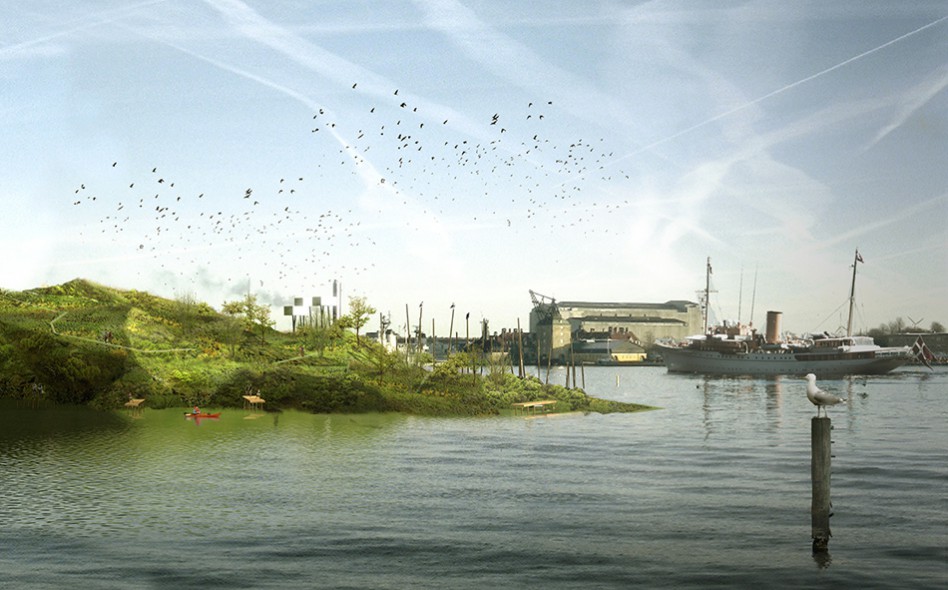
Project information
Responsible partners: Ole Schrøder and Flemming Rafn Thomsen
Design Team: Mónica Galiana, Anna Sissela Michalsdotter, Joan M. Rasmussen, Jakub Włodarczyk, and Agnete Schimmell Raakjær
Location: Copenhagen Habour
Client: Copenhagen municipality – Technical and environment management
Collaboration: PK3
Project period: 2012
Type: Visionary presentation
STRATEGY AND INTERVENTIONS
The blue vision is a story of the future of the harbor, where the possibilities and recreational value are the main players. This story is told in a three part concept, with five intervention proposals each highlighting the potentials in the harbor:
Architecture is too often forced from its big dreams for the sake of pragmatism. Working with ‘ Bright blue visions’ has used the energy and driving force inherent in these visions and created a visionary and unique urban space. This exercise is used as a can opener for preserved ideas and dreams many people have about the harbor and its urban spaces. The result is an energetic, sensory, playful, hybrid blue urban space that will not be contained by the traditional understanding of a harbor, its role in the city and visual expression. Urban space which also includes the historical parts of the harbor along side new uses and activities.
Edges – Another concept that will improve the recreational uses of the harbor is treatment of the edges between water and land. The distance from the edge of the quay to the water surface should be minimized by making more direct connections. This will be implemented via new islets and islands in the harbor, turning edges into stairs, establishing stone piers, floating bridges and walkways on the surface.
Connections – The third and last concept is about making justified connections along and across the harbor. The harbor’s flow course is broken several places and users are forced to move back and forth in the same direction, rather than going forward in a circuit. By strengthening the connections in the harbor there will be better connectivity, more experiences, and circular movement around and in the harbor.
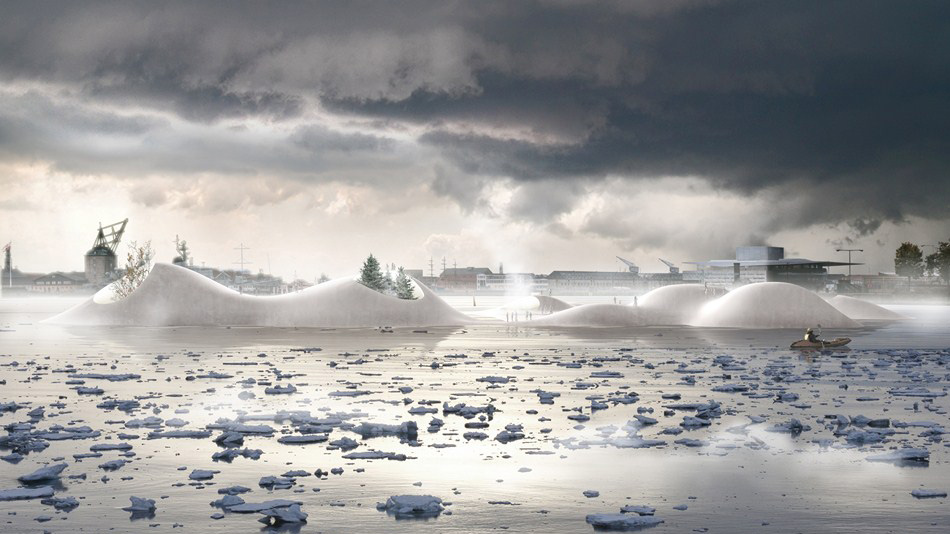
House of Water
‘The wish for a better reputation will not create a better country, but creating a better country, you automatically get a better reputation’ – From the world’s most prominent expert on national branding strategies. Another way to say this is, a strong brand is created with meaningful goals, action, and including residents in the plan. This is the ambition of the Re-think Water project. Consider if the danish water businesses worked together to create ‘The House of Water’ in Copenhagen’s harbor. A place where the visitors could experience and learn about global water problems and solutions. Knowledge, water, and nature would unite into a new contextual architecture, that give more to the city and the harbor than they take away. A unique architectural form, made from concrete which creates both space and landscape, where one can interact with water.
Bird Island
Imagine if we put a island for birds in the middle of the harbor. A green island surrounded by stone reefs, which reference the landscape around the first settlements in Copenhagen. An island where biodiversity and nature’s irregularity is the main concept. The ‘Bird Island’ is the dream of creating an irregular island in the middle of the harbor, that can tell of the historic landscape, and is an attractive habitat for bird life. It can be used as an experimental site where the development of an ecosystem can be observed. The island would be the perfect destination for bird lovers, fisherman, mussel collectors, biologists, school children, or Copenhageners that just want to enjoy the afternoon sun and the atypical landscape in the middle of the harbor.
Krøyers Pool
Imagine if the harbor invited people to enjoy the view right from the water’s edge, in the water, and underwater. Krøyer’s Pool is the dream of a performative urban space, that combines the next generation of harbor bath with productive value. A part of the blue plan is to make the area around Krøyers Pool an attractive place for the many plant and animal species in the harbor. The combination of direct access to the water’s surface, Krøyers Pool can be an attractive place for fishing , harvesting water plants and steam. The placement, in front of the world renowned restaurant Noma, will present the harbor as a clean, attractive resource for the many national and international guests. A harbor which supports the nordic gastronomic ambitions about a smaller distance from ground to plate- or from harbor to noma. Krøyers Pool will make create a exhibition window for nordic food and sustainable development in Copenhagen.
Sport Island
Imagine if there was a sports island in the middle of the harbor? An island where the water’s surface is filled with activities, inviting the city’s residents out into the water and create new sports experiences close to nature. The sports island is a dream about the expansion of the harbor’s history in a contemporary, activity based context, that connects the experience of nature and sport together. By creating a new island in the harbor there will be facilities for different water sports. The sports island will attract urban life to the harbor and make it an attractive place for divers, swimmers, kayakers, winter bathers, and other forms of water sports. The ‘soft users’ need a safe place where they do not have to worry about a boat speeding by.
Opera Park
Imagine if the operas wealth of sound could be heard from the Opera Park which connects to its surrounding. A sound park which offers an auditory experience at the edge of the harbor. The Opera Park is the dream of a temporary, recreational use of the large grass area next to the opera house. A dream of normalizing fine culture, by turning the opera house inside out and give the park’s visitors the opportunity to listen to the magical, transformative world of opera. The opera park, by use of music, cherry trees, magnolias, and the salty air, create an extraordinary holistic sensory experience. In the coming years,four new bridges will allow for better connection across the harbor. The opera park will act as an extension of the ‘inner harbor bridge’, and make holmen a public destination, that can attract life to the area and support the attempts to better connect the city.
knowledge about water technologies. Denmark is in the front when it concerns water knowledge. The blue vision therefore presents Copenhagen’s water technologies successes and the know-how of this area. The harbor pool is now clean enough so that tourists and locals can swim and fish in it. A privilege only a few big harbors around the world share. By creating an accessible, recreative and a by-trial basis blue urban space, Copenhagen harbor can be in the exhibition window for danish water technology.
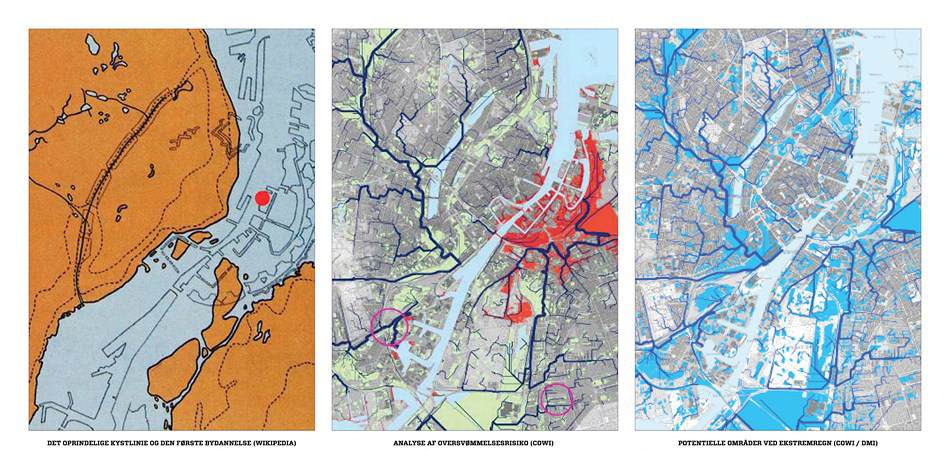
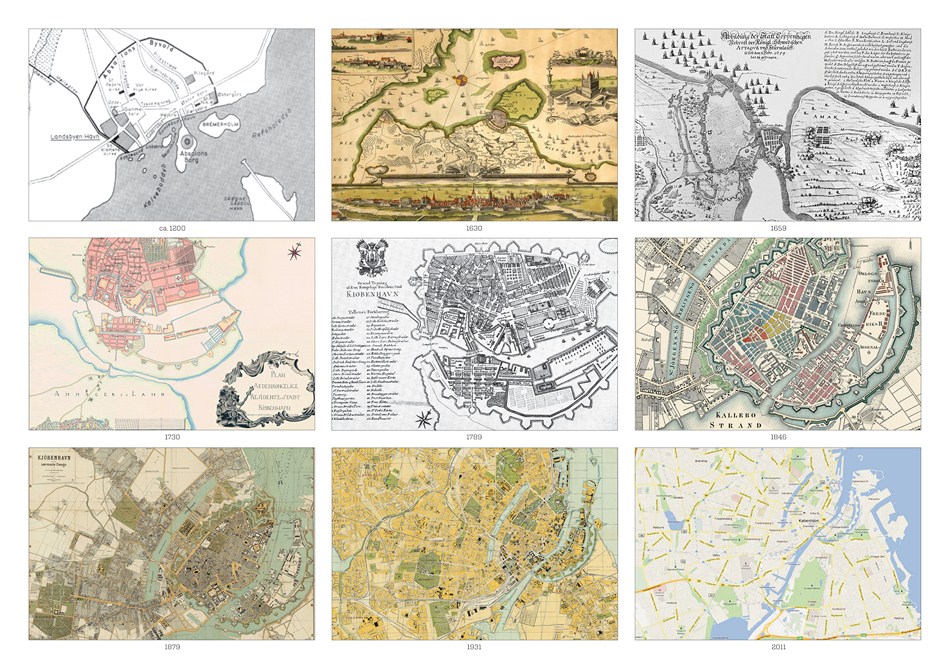
the easy access to sea transportation routes, along with its placement between Roskilde and Skåne. Copenhagen was the major hub for trade in this area. While Copenhagen is growing as a center of power, the harbor is narrowed. From 1550 and there forth, they built several man-made islands and islets, such as ‘Slotsholm’, ‘Bremerholmen’, ‘Nyholm’ ,’ Frederiksholm’, ‘Arsenal Island’, and ‘Dock Island’ created for naval purposes. In 1617 Christian IV gained permission to create a new city in the harbor, ‘Christianshavn’. Other examples of the man-made islands and islets include ‘Trekroner’, ‘Kastellet’, ‘Teglholmen’, and ‘Sluseholmen’.
and tool to create connections within local communities. Some examples of present day commons include food cooperatives, child care, courtyards, wireless networks, sports arenas, and green energy sources. With ‘ Bright blue visions’ , Tredje Natur and PK3 wants to make Copenhagen’s harbor a contemporary blue commons by creating several uses and thereby creating the foundation for different types of communities. This could be, for example, opportunities for fishing, sport, water activities, bird conservation areas, beekeeping, education, in the harbor. By creating community in the harbor a blue vision can instigate local sprite and co creation in the city.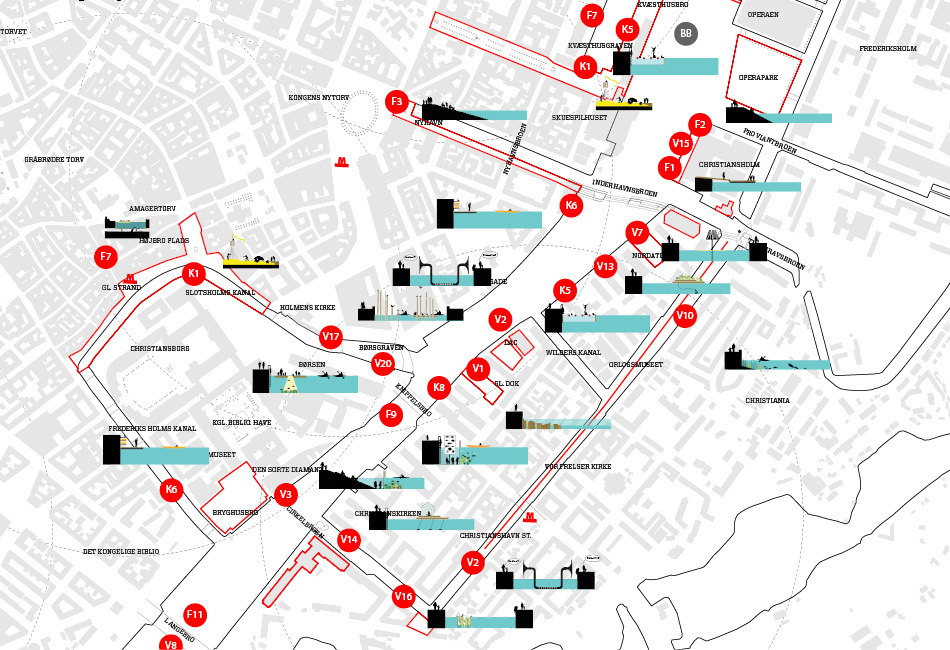
The book ‘Commons’ by Tor Nørretranders and Søren Hermansen describe how a community is connected to place, and how the localness and social connections are slowly being lost in modern society. According to the authors, communities have disappeared because cities, and decisions are physically removed from spaces where everyday life actually is played out. If this trend was slowed people could regain connection to place, compassion, and co ownership in their local area. Society must stimulate this tendency of community in a town commons. Two hundred years ago, the town commons was an open grassy where anyone could set their livestock to graze. The book introduces the commons as an important resource 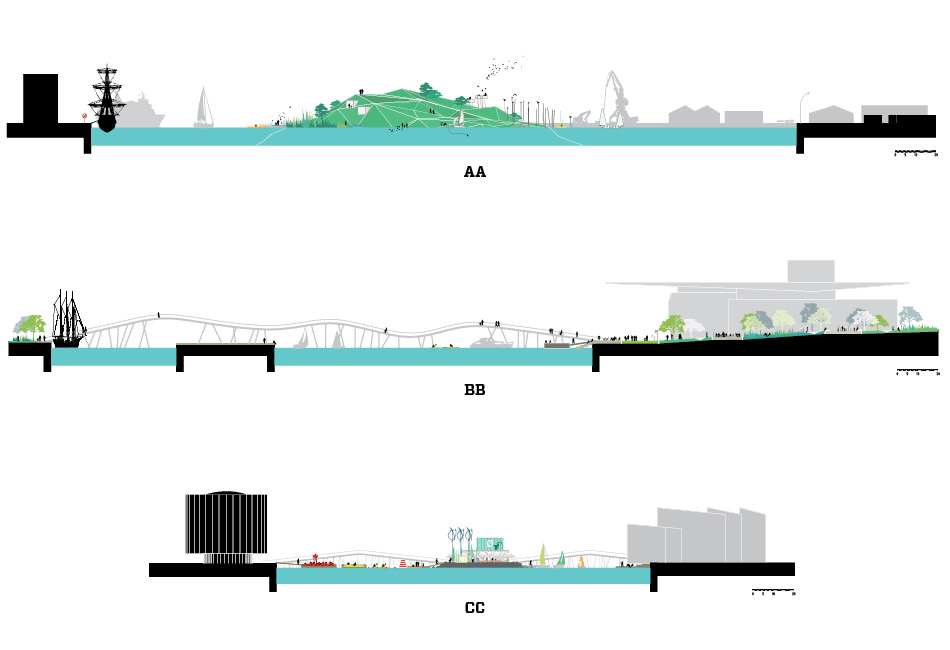

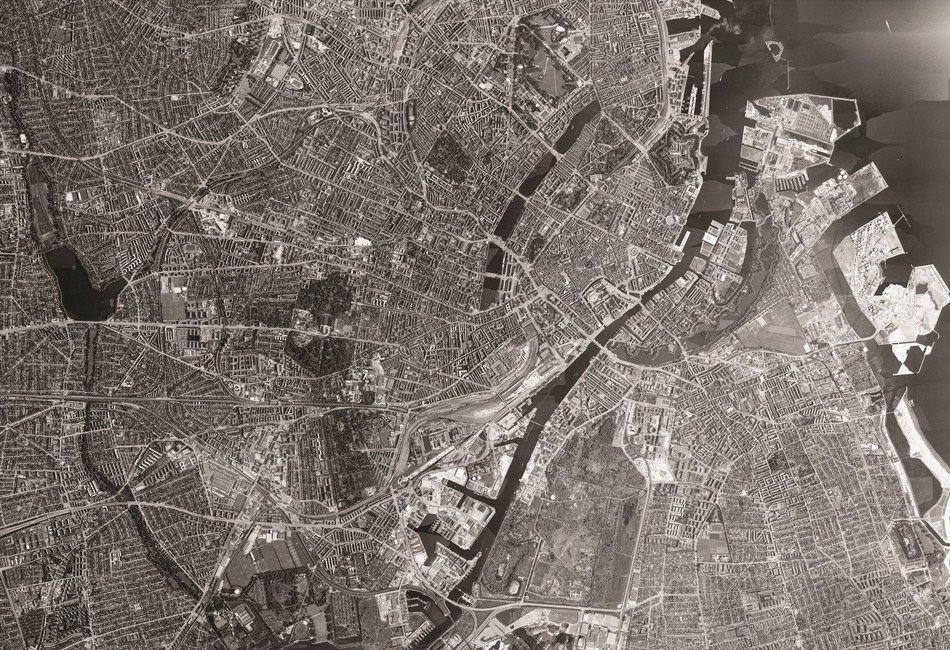
A team of British architect Zaha Hadid in close collaboration with architecture and engineering consultancy Sweco and Tredje Natur architects has won the competition of ...
We have created 'Undergrowth' - a vision for transforming Kongelunden in Aarhus, Denmark. With Undergrowth we have made a regenerative strategy that supports nature’s ability ...
The future neighbourhood – Lynetteholm – will be a vital part of the climate- and flood protection of Copenhagen and create space for more than ...
In THE BLUE RAMPARTS, we have worked with the area Damsterdiepzone in Groningen - an area that accommodates industry, housing, and businesses. In our vision ...
Ugakei Circles is a sustainable tourism project located on the fringe of one of Japans most populated areas. The project marks a new shift towards low impact regenerative tourism
In a new grand vision for the 40-hectare future development area, Dokken in Bergen, Norway, Third Nature shows high ambitions for the regenerative city in an old logistics port and ferry terminal.
The historical Enghavepark has been transformed and is now the biggest climate project in Copenhagen. With a 22.600 m3 water reservoir, the park is answering a need to handle Copenhagen's current and future challenges with water.
The Norra Bunkeflo area in Malmö, Sweden, can become a sustainable model example for the realization of the UN's World Goals and how we can live up to the 2030 goals of the Paris Agreement.
‘New Angle’ shows how the SDG’s can be translated into practice in the construction industry. It is estimated that the project represents a CO2 saving of 30-50%.
With CPH Common House we propose the world's first upcycled high-rise building
With our master plan for Adamstuen in Oslo, we show that it is not necessary to make a compromise between building and biology in order to achieve an architectural balance in a master plan
ARKENWALK is an ambition to unite art and city with a path that anchors Arken Museum as the town’s urban generator
With the proposal `Karnappen' we have created a distinctive landmark with a green and vibrant facade for Grønttorvet in Valby, Copenhagen
The isolated Vridsløselille State Prison is rethought inside out to become an active and integrated part of the surrounding city life in Albertslund
THIRD NATURE and COWI have made a feasibility study for the City of Copenhagen, highlighting the possibilities and consequences of establishing a traffic tunnel below Åboulevarden
New Islands Brygge School has the potential to become a new and highly interconnected link between the harbor, the nature and the city
The Water Culture House integrates water activities with the cultural and popular everyday life by the harbor and creates unique and distinctive experiences
We create a new and green gathering point in Hyllie that with a station building, housing and a station square strenghtens a livable, diverse and vibrant city life
THIRD NATURE releases a groundbreaking solution to major cities' challenges with flooding, parking and lack of green spaces
With Kunskabsberget, TREDJE NATUR has designed an open, safe and flexible learning environment, with a clear local presence
Værløse Airfield has great potential for creating a grounded everyday life with nature at its core
TREDJE NATUR have created a new masterplan for “Svanemøllens Kaserne” with an understanding of the areas special history as its starting point
The station at Klostergården is a visionary infrastructural project that shows how the construction of a new station can lift up and rethink an entire neighborhood in a city
In the heart of Nordhavn lies the historic port of Copenhagen, Kronløbsøen. A new island rising from the harbour as an alluring mirage
TREDJE NATUR has together with C.F. Møller and Rambøll come up with a new holistic vision for a close sustainable Gustavsberg from the basis of the place’s original and forgotten nature.
TREDJE NATUR and C.F. Møller wins The Future Sølund. Along with Bascon, Transsolar and Smith Innovation they draw and will build one of the largest and most visionary residential projects seen in the history of Denmark
Papirøen has a unique placement in at the inner part of Copenhagen harbour. There is a lot of potential on this prime location setting the bar high on the subject of Copenhagen future city- and nature developments.
TREDJE NATUR have designed a proposal for a new pedestrian and cyclist bridge in Sydhavnen
TREDJE NATUR wins ambitious project on Nordhavn's best building site. On the tip of Redmolen surrounded by water on three sides, a prestige building and urban space is now in the making.
CBS in the city - The city in CBS! Our dogma is about developing CBS as a campus that is integrated into the city
TREDJE NATUR continues to build on the Copenhagen climate adaption plan, and joins the water investment with new strategies for nature, life and community in the city.
Vinge is not just inspired by nature, it is a city which works with nature’s processes and creates nature.
TREDJE NATUR's plan revives Bryggens Bastion with green and blue elements as the central values in the neighborhood. A connecting corridor in the project becomes the neighborhood’s new hub.
TREDJE NATUR won 2nd place in the Middelfart Climate City competition, along with Entasis and Grontmij.
TREDJE NATUR designs a collaborative platform presenting new solutions to future water challenges
Our winning proposal for the development of Almegård Barracks is based on a holistic, local concept where the main transformative force is found in the individual users and inherent qualities of the site.
Tredje Natur thinks Copenhagen’s Harbor should be a lively, accessible, productive and recreational area in the city.
The climate district in Østerbro shows the climate adaption of the future and the development of the existing city.